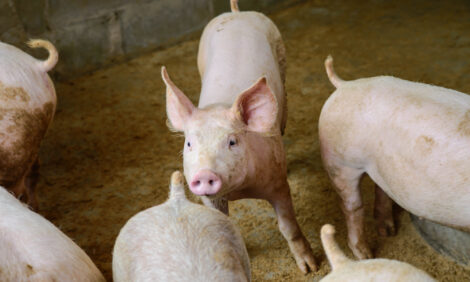



Two tactics to reduce stillborns and improve piglet survival
Piglet survival sets the stage for a hog system’s success. Two midwestern sow operations recently discussed how each achieves high piglet-survival rates by using different techniques to attend farrowing.On both farms, stillborn piglets are included with preweaning mortality to determine piglet-survival rates.
Farm 1: 18-hour versus 24-hour care in farrowing
In an attempt to reduce stillborn numbers, Borgic Farms of Raymond, Illinois, implemented 24-hour care in its 6,100-sow operation in November 2015. Manager Josh Matli worked with the new system, setting up crews and hiring personnel.
After a 1½ years, the farm decided to cut back care from 24 hours to 18 hours a day. While stillborns dropped 1% with the 24-hour care (from 6% to 5%), the impact on employees was too great. A shorter but extended care schedule worked much better. “And we did not lose much on stillborn numbers when we cut back our hours,” Matli added.
Challenges
The schedule for the 24-hour care first involved three people working from 6 a.m. to 4 p.m. and two people taking either a night or day 12-hour shift. After 10 months, they switched to all 12-hour shifts with 2 days on, 2 days off, and every other weekend. They used four teams with two people in each team.
“It was a challenge for workers to get everything done,” Matli said. “We found teams were burned out in the last third of their shift (hours 8-12), and it takes the next team a little time to get up to full speed when they start their shift.”
Only the easiest tasks like monitoring and setting up rooms were completed. Teams would not do the more labor-intensive tasks of processing or moving fallout pigs. Employees calling in sick and no shows left teammates alone for the shift.
Time-study results
These challenges prompted Borgic Farms to initiate a time study to track when farrowing started, its length and when completed. Using 10,000 farrowings, they learned most farrowing activity occurred between 4 p.m. and midnight Tuesday to Saturday.
“This told us that we have to cover ourselves until midnight,” Matli said. “So, we set up teams from 6 a.m. to 3 p.m. and 2 p.m. to midnight. The hour overlap allows the new shift to get caught up.
“There are three monitors per shift from Tuesday to Friday and two monitors per shift on Saturday, Sunday and Monday,” he continued. Employees work 7 days on, 1 day off, 4 days on, 2 days off, and every other weekend.
“The benefits are fewer employees, and they are not as tired as before,” Matli said. “They come in happy. They like the hours. Tasks get completed on both shifts. And there are no overnight shifts, leading to a better family life.”
Factors causing stillborns
The time study completed by the farm found other factors affecting stillborn rates. For example, stillborns did not vary in sows farrowing from 114 to 117 days of gestation, according to Aaron Lower, DVM, Carthage Veterinary Service.
Stillborns did increase for sows with higher parity rates. “This is why we focus on older sows in farrowing with 5, 6, 7 and 8 parities,” Lower said.
The study showed most sows farrow in 4 to 5 hours. “There’s not much of a difference in stillborn rates until after 5 hours,” he said. “Then we need to push those sows along with oxytocin and sleeving, because they are getting into a high-risk time period when farrowing duration is greater than 5 hours.”
The number of sleevings is correlated with stillborn rates as expected, Lower added. After 12 sleeves in one farrowing, stillborn rates increased.
Farm 2: Sow induction increases attended farrowing
The sow farms Kurt Nagel manages would not achieve 2.9% stillborn and 10.3% preweaning rates without using induced farrowing.
“We do a lot of induction with an injectable prostaglandin, and for our system it works,” according to Nagel, director of sow production, Belstra Milling Co. Inc., Demotte, Indiana. “We probably attend 90% of our farrowings. If we are not there, then we don’t have an opportunity to save piglets.”
One of the five farms Nagel manages boasts a 0.9% stillborn rate and 9.8% preweaning mortality for a 3-year period. In comparison, a benchmarking system they are a part of posts a 6.7% average stillborn rate and 13.8% preweaning mortality rate.
Reduce stillborns
Key to success with induced and attended farrowing starts with an engaged staff. “Strategies for lowering stillborns is people, people, people,” he stated. “If they are not engaged, they won’t do it.”
Employees are required to check sow progress every 20 minutes during farrowing, 7 days a week. They also are required to sleeve sows, especially toward the end of the farrowing process. If sows need additional help with contractions, oxytocin or CMPK (calcium, magnesium, phosphorus and potassium) is used.
“The sow farm with 0.9% stillborns will sleeve sows 10 to 11 times per farrowing,” Nagel said. “Maybe what sets us apart is how much passion our people have for farrowing. They want to get those babies out, get them dry and warm, and get them milk.”
Prevent crushing, scours
Preweaning mortality typically occurs in the first 2 days — with crushing the leading cause. “We want our people to be present in the room when sows start lying down after feeding and processing the first couple of days,” he said.
“They also need to be observant…You can see if a sow isn’t feeling well. Is she eating, milking, comfortable, abnormal temperature?”
Staff needs to watch and smell for problems. “I think when we have scours under control, preweaning mortality is under control,” Nagel added. “I can walk into a farrowing room and smell if there’s scours.”
All mortalities in the farrowing rooms must be logged with a date and reason for it. Without that information, progress can’t be made for improving piglet survival.









